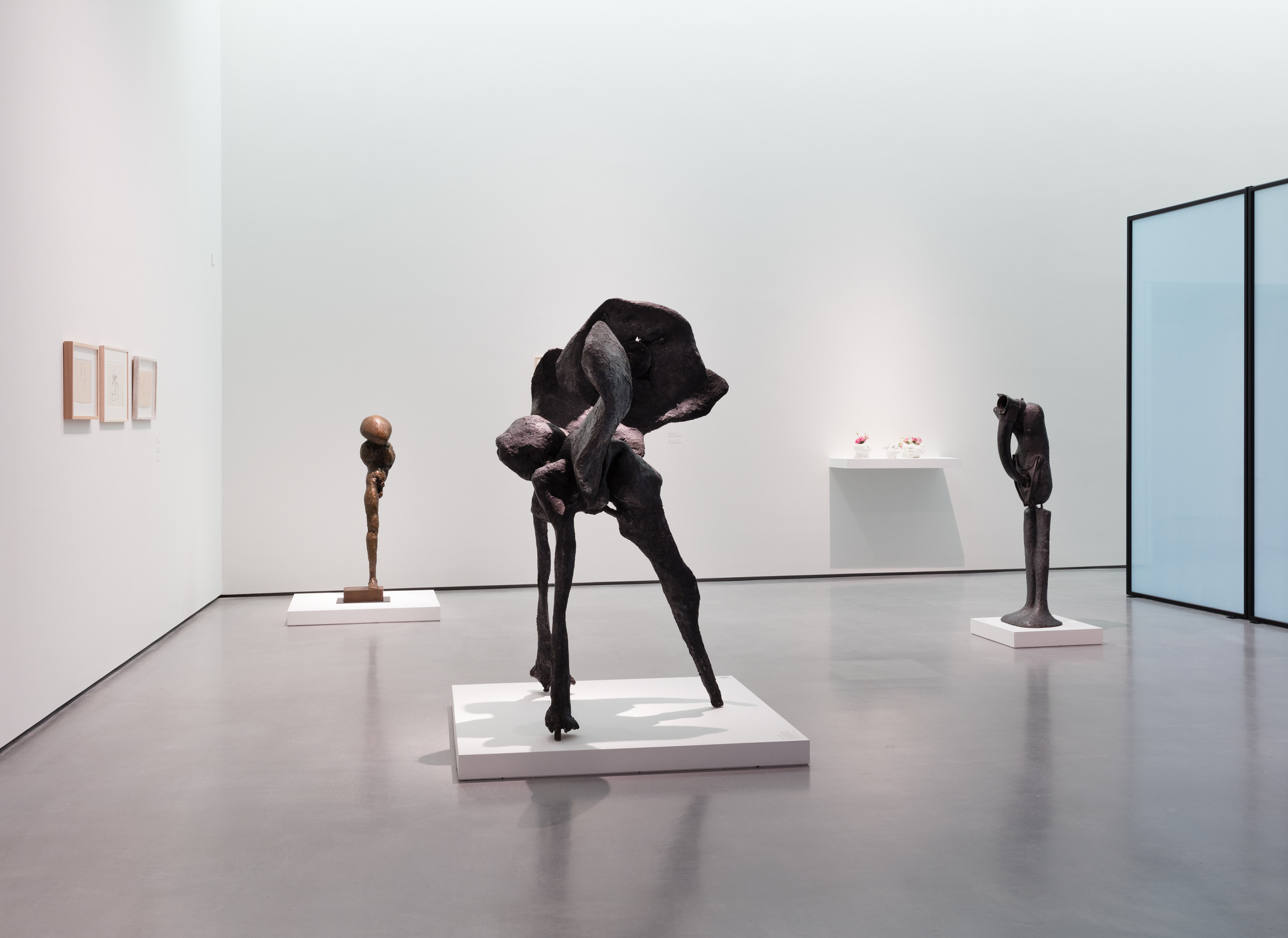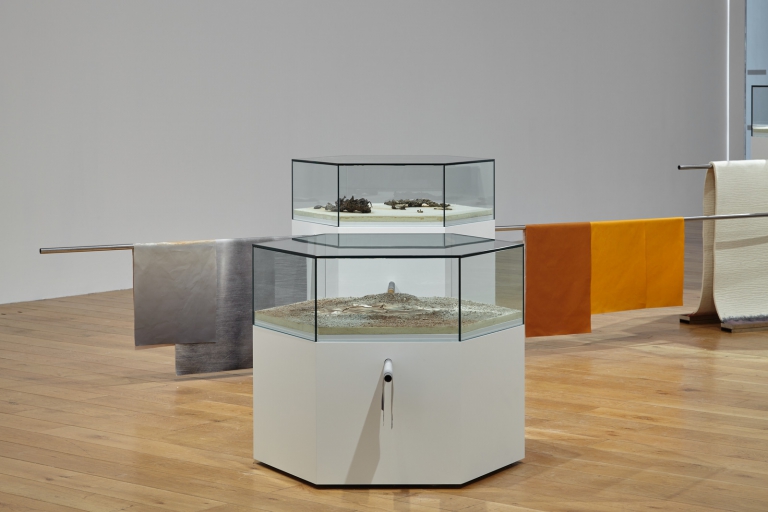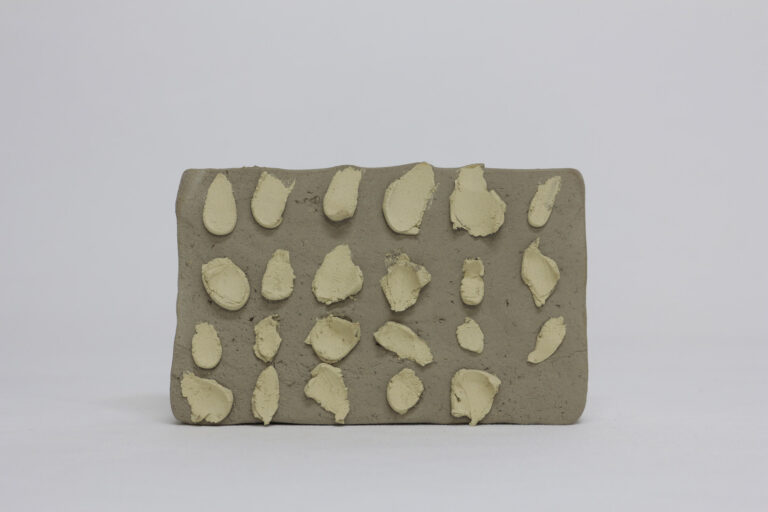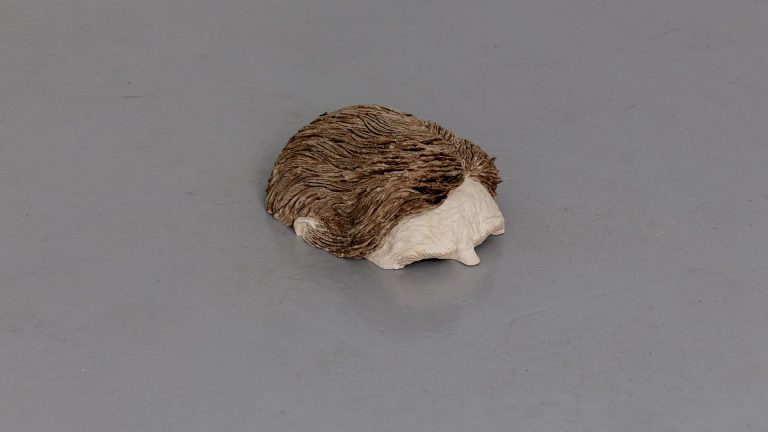Artist: Alina Szapocznikow
Exhibition title: Human Landscapes
Curated by: Andrew Bonacina and Marta Dziewanska
Venue: The Hepworth Wakefield, West Yorkshire, UK
Date: October 21, 2017 – January 28, 2018
Photography: all images copyright and courtesy of the artist and The Hepworth Wakefield
This autumn The Hepworth Wakefield will present the first major UK retrospective of Polish artist Alina Szapocznikow (1926-1973), one of the most important, yet for many years, overlooked artists of the 20th century. The exhibition will bring together over 100 works spanning Szapocznikow’s career, including a selection of her drawings, which have rarely been publicly displayed.
Working through one of the most tumultuous periods in history, Szapocznikow created a body of work that explored her own physicality against a backdrop of social and political upheaval. Her own life was most indelibly marked by her experiences of internment in the Pabianice and Łódz ghettos between 1940 and 1942, from which she was subsequently transferred, via Auschwitz, to the camps of Bergen-Belsen and Theresienstadt. Witnessing first-hand the horrors of the Holocaust, war and its physical impact, Szapocznikow’s fascination for the human form was galvanized. At the end of the war she committed to becoming an artist, focusing on sculpture. In 1946 she moved to Prague where she studied sculpture under Josef Wagner and then from 1948 to 1950 she studied at the École Nationale Supérieure des Beaux-Arts in Paris.
The exhibition will trace a chronological path through Szapocznikow’s work, demonstrating how she consistently dismantled a classical ideal of sculpture. The earliest works reveal her traditional training and innate talent for representing the human figure. Szapocznikow swiftly moved towards a darker representation of the body in pieces, exemplified by works such as Exhumed (1955), which is cast in bronze and resembles an ossified figure retrieved from the ground.
A significant part of the exhibition will focus on works made between 1966 and 1972, a period in which Szapocznikow explored some of her most original forms and experimented with materials that charted a new language for sculpture. These often-provocative objects, in which Szapocznikow transformed casts of her lips and breasts into everyday objects like lamps, cushions, or ashtrays, are at once sexualized, visceral, humorous and menacing. They demonstrate Szapocznikow’s engagement with the legacies of Surrealism, and the contemporary movements of Nouveau Réalisme and Pop Art, while resisting being defined by any one discourse. Infused with an even greater sense of autobiography, her work also reflected her own physical transitions as she was diagnosed with cancer in the late 1960s and battled the disease for the rest of her life.
The final room of the exhibition includes a selection of works from the Herbarium (1972) series – latex casts of her own body as well as that of her son Piotr. In these works Szapocznikow plays with the relationship between two and three dimensions, casting bodies and presenting them as flattened, almost forensic, objects. The Herbarium series was Szapocznikow’s last gesture of recording both her own body and those of her young family, presented as if in the pages of an archive.
Alongside her sculpture the exhibition will display a significant selection of her drawings, many of which have rarely been presented for exhibition before. Szapocznikow drew throughout her life. While some drawings were made in preparation for sculpture, many would be formal exercises in their own right. Szapocznikow would often draw her own sculptures after she had made them, continuing to play with their forms and visualise their ongoing transformation. Through new research the exhibition will also present personal photographs, archival material and film documentation of Szapocznikow’s studio, working practice and many of the exhibitions she worked on, in which she experimented with new installation formats and techniques.
The exhibition is being developed by The Hepworth Wakefield’s Chief Curator Andrew Bonacina and Marta Dziewanska, Curator and Head of Research at the Museum of Modern Art in Warsaw.
The exhibition is supported by The Henry Moore Foundation
Szapocznikow was born in 1926 in Kalisz, Poland into an assimilated Jewish family. Her father, who died a year before WWII broke out, was a dentist and her mother, a pediatrician. Szapocznikow was 14 when she was trapped in the Pabianice Ghetto along with her mother and younger brother. In 1942 they were transferred to the bigger Łódz ghetto and then onto Auschwitz and Bergen-Belsen. Little is known of their time during the war, but they were separated and her brother died at Litoměřice. In 1945, a 19-year-old Szapocznikow was liberated. Assuming all her family had been killed, she moved to Prague where she applied for Czechoslovak citizenship and enrolled in the Higher School of Arts and Industry, where she studied sculpture under Josef Wagner. In 1948 she moved to Paris and studied at the École Nationale Supérieure des Beaux-Arts (1948-50).
In Paris, Szapocznikow made friends with a number of Polish academics who spent time at a canteen on the rue de Racine which served as a meeting place for Polish left-wing circles and was financed by the Polish embassy. During one of the visits, she met her future husband, Ryszard Stanisławski, who later became an art critic and Director of the Museum of Art in Łódź. Together they adopted their son Piotr.
In 1951 the couple returned to Poland where Szapocznikow obtained a number of public commissions and took part in many competitions and exhibitions, rising to fame within the Polish art world. The artist represented Poland in the 1962 Venice Biennale. In 1958 Szapocznikow and Stanisławski divorced. The artist returned to Paris in 1963 with her son and second husband Roman Cieślewicz, a graphic designer, where she lived for the rest of her life. Despite having achieved success and recognition in Poland, her work was not understood in Paris and she did not make an impact on the Western art market before she died. After a long battle with breast cancer, the artist died, aged 47, in the Praz-Coûtant sanatorium in Passy, France. She was buried in Montparnasse cemetery in Paris.
Several exhibitions of Szapocznikow’s work were held in Warsaw and Paris after her death, however it is only in recent years that her work has received the widespread acclaim it deserves. The first comprehensive retrospective Alina Szapocznikow: Sculpture Undone 1955-1972 was shown at WIELS Contemporary Art Centre, Brussels and later traveled to The Museum of Modern Art, New York; Hammer Museum, Los Angeles and the Wexner Centre for the Arts, Columbus (2011-2013). There was also a major survey exhibition at the Centre Pompidou, Paris (2013). The Hepworth Wakefield presentation will be the first retrospective of Szapocznikow’s work in the UK.
Installation view of Alina Szapocznikow: Human Landscapes at The Hepworth Wakefield 20 October 2017 – 28 January 2018. Photo: Lewis Ronald. Courtesy The Hepworth Wakefield
Installation view of Alina Szapocznikow: Human Landscapes at The Hepworth Wakefield 20 October 2017 – 28 January 2018. Photo: Lewis Ronald. Courtesy The Hepworth Wakefield
Installation view of Alina Szapocznikow: Human Landscapes at The Hepworth Wakefield 20 October 2017 – 28 January 2018. Photo: Lewis Ronald. Courtesy The Hepworth Wakefield
Installation view of Difficult Age (1956) in Alina Szapocznikow: Human Landscapes at The Hepworth Wakefield 20 October 2017 – 28 January 2018. Photo: Lewis Ronald. Courtesy The Hepworth Wakefield and Muzeum Sztuki, Łódź
Installation view of Difficult Age (1956) in Alina Szapocznikow: Human Landscapes at The Hepworth Wakefield 20 October 2017 – 28 January 2018. Photo: Lewis Ronald. Courtesy The Hepworth Wakefield and Muzeum Sztuki, Łódź
Installation view of Difficult Age (1956) in Alina Szapocznikow: Human Landscapes at The Hepworth Wakefield 20 October 2017 – 28 January 2018. Photo: Lewis Ronald. Courtesy The Hepworth Wakefield and Muzeum Sztuki, Łódź
Installation view of Bouquet II (1966) in Alina Szapocznikow: Human Landscapes at The Hepworth Wakefield 20 October 2017 – 28 January 2018. Photo: Lewis Ronald. Courtesy The Hepworth Wakefield and Muzeum Sztuki, Łódź
Installation view of Alina Szapocznikow: Human Landscapes at The Hepworth Wakefield 20 October 2017 – 28 January 2018. Photo: Lewis Ronald. Courtesy The Hepworth Wakefield
Installation view of Alina Szapocznikow: Human Landscapes at The Hepworth Wakefield 20 October 2017 – 28 January 2018. Photo: Lewis Ronald. Courtesy The Hepworth Wakefield
Installation view of Alina Szapocznikow: Human Landscapes at The Hepworth Wakefield 20 October 2017 – 28 January 2018. Photo: Lewis Ronald. Courtesy The Hepworth Wakefield
Human Landscapes, the first UK retrospective exhibition of the work of Polish artist Alina Szapocznikow (1926-1973) Photo by Guzelian
Human Landscapes, the first UK retrospective exhibition of the work of Polish artist Alina Szapocznikow (1926-1973) Photo by Guzelian
Alina Szapocznikow, Autoportrait I, 1966. Marble, polyester resin. Private collection. © ADAGP, Paris 2017. Courtesy The Estate of Alina Szapocznikow / Piotr Stanislawski / Galerie Loevenbruck, Paris. Photo Fabrice Gousset.
Alina Szapocznikow, Monstrum II [Monster II], 1957. Lead and metal construction. © ADAGP, Paris 2017. Courtesy The Estate of Alina Szapocznikow / Piotr Stanislawski / Galerie Loevenbruck, Paris. Photo Fabrice Gousset
Alina Szapocznikow, Self-portrait – Herbarium, 1971. Polyester and polychrome wood. Grażyna Kulczyk Collection. Courtesy The Estate of Alina Szapocznikow / Piotr Stanislawski / Galerie Loevenbruck, Paris. Photograph Bartek Buśko
Alina Szapocznikow, Lampe-Bouche [Illuminated Lips], 1966. Coloured polyester resin, electrical wiring and metal. © ADAGP, Paris 2017. Courtesy The Estate of Alina Szapocznikow / Piotr Stanislawski / Galerie Loevenbruck, Paris. Photo Fabrice Gousset
Alina Szapocznikow, Cendrier de Célibataire I [The Bachelor’s Ashtray I], 1972. Coloured polyester resin and cigarette butts. Private collection. © ADAGP, Paris 2017. Courtesy The Estate of Alina Szapocznikow / Piotr Stanislawski / Galerie Loevenbruck, Paris. Photo Fabrice Gousset
Alina Szapocznikow, Bouquet II, 1966 Plaster, plastic foil, coloured polyester resin, metal. Courtesy Muzeum Sztuki, Łódź. © ADAGP, Paris 2017. Courtesy The Estate of Alina Szapocznikow / Piotr Stanislawski / Galerie Loevenbruck, Paris
Alina Szapocznikow, Illuminated Woman, 1966-1967 Private collection © ADAGP, Paris 2017. Courtesy The Estate of Alina Szapocznikow / Piotr Stanislawski / Galerie Loevenbruck, Paris. Photo Fabrice Gousset
Alina Szapocznikow, Untitled, ca. 1959 -1960 Ink on laid paper 13 1/8 x 9 5/8 in Courtesy The Estate of Alina Szapocznikow / Piotr Stanislawski / Galerie Loevenbruck, Paris © ADAGP, Paris 2017. Photo: Fabrice Gousset.
Alina Szapocznikow, Untitled, ca. 1970-1971 63 x 48 cm © ADAGP, Paris 2017. Courtesy The Estate of Alina Szapocznikow / Piotr Stanislawski / Galerie Loevenbruck, Paris. All rights reserved
Alina Szapocznikow, Bust-Length Figure of a Woman, Headless 2, ca. 1971 Felt-tip on paper perforated along the left edge 32 x 23,4 cm Private collection © ADAGP, Paris 2017. Courtesy The Estate of Alina Szapocznikow / Piotr Stanislawski / Galerie Loevenbruck, Paris. Photo Fabrice Gousset
Installation view of Alina Szapocznikow: Human Landscapes at The Hepworth Wakefield 20 October 2017 – 28 January 2018. Photo: Lewis Ronald. Courtesy The Hepworth Wakefield





























